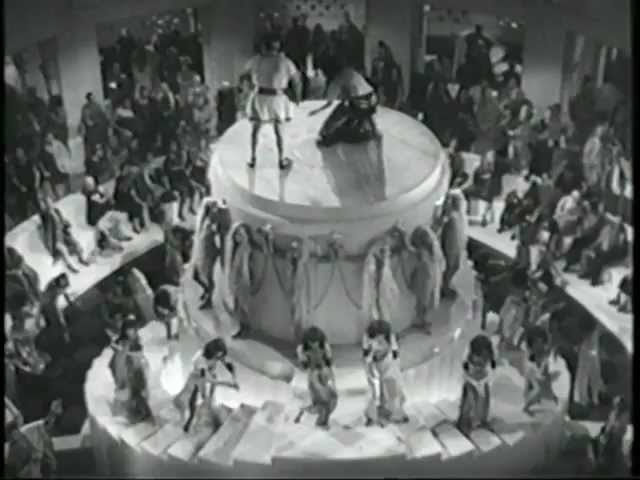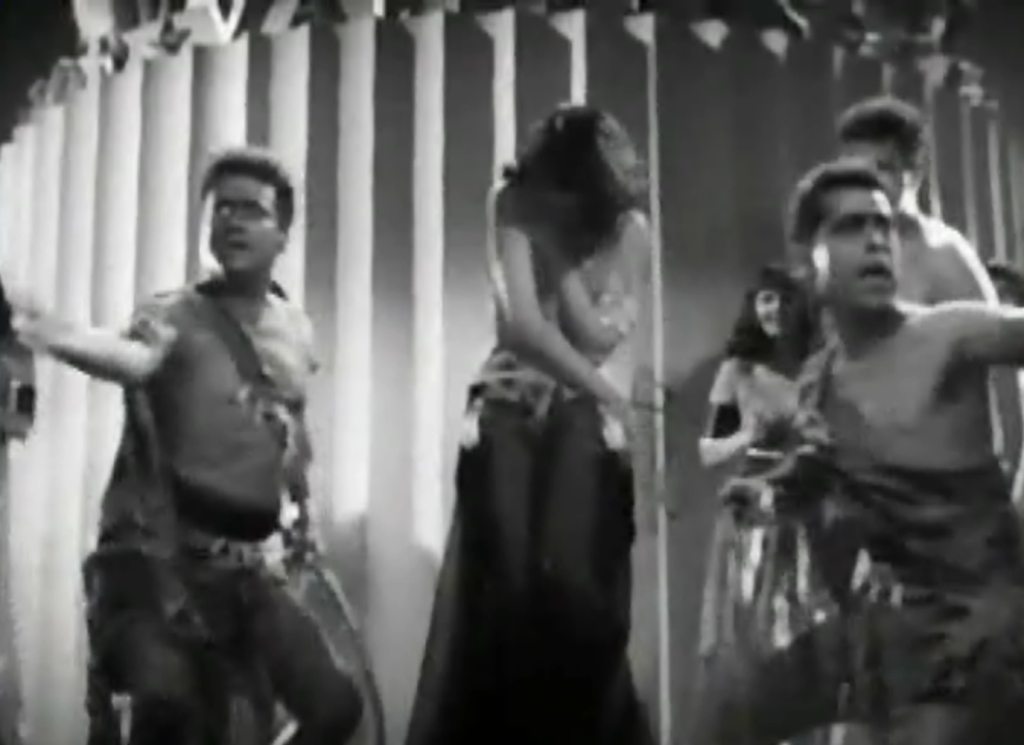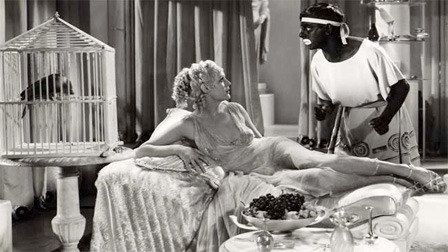
Roman Scandals is a 1933 American musical comedy, pre-Hays Code film. Eddie Cantor stars as Eddie, an oddball handyman in the present-day, corruptly governed town of West Rome. Without explanation, Eddie is transported back to ancient Rome and gets tangled up in a plot to kill the corrupt Emperor.
For our purposes, it’s noteworthy for two of the musical set-pieces, both designed by Busby Berkeley, famed for his production numbers involving vast arrays of women in identical, often fetishistic costumes.
The first is an elaborate dance number set at the Roman slave market. Women, naked but for long blonde wigs, are chained to walls. Other, brunette women do synchronized dances in scanty outfits on a tiered display like a giant wedding cake. Reptilian-looking men in the crowd eye the captive women. One of the brunette women is dragged to the top of the display, and then jumps off and dies, ending the number.


This type of “captive women on display” was common in historical epics of the time (see Cecil B. DeMille’s The Sign of the Cross), building on the paintings and stage shows of the 19th century, and Scandals turned it into pure spectacle.

The second number is when Eddie has to sneak into the women’s quarters of the imperial palace, where men are forbidden. Through comic contrivance, he puts on blackface and is mistaken for an Ethiopian beauty expert. This leads to the Orientalist fantasy of being the only man in the harem, but with a 1930s American twist. The white women, every one of them with long blonde hair (or wigs), are tended to by black women. Steam and streaming water prevent total nudity.

Eddie and the white women sing “Keep Young and Beautiful”, while both black and white women dance. (Note that the black women don’t sing or get any dialog.) Through rapid editing and swinging doors in the set, the white and black women switch places instantaneously, reflecting Eddie’s racial hybridity and tickling the audience’s anxiety about racial mixing.
This lasts until Eddie pulls up his toga and reveals his white thighs, which makes both black and white women take notice and turn on him. They chase him into the steam bath. A black woman turns up the steam until Eddie magically shrinks down to a child (also in blackface) and escapes. Comedy keeps the scene from progressing to sexuality by regressing the protagonist into a child.
Scandals pushed about as far as a film could go before the Code, promising the sexual availability of slave women. The distinct racial configuration of the two numbers toyed with the idea of women who combined white bodies with the accessibility and unrestrained sexuality attributed to black women.




I think I’ve seen clips from this one before.
[…] History of BDSM Roman Scandals (1933): The Celluloid Dungeon […]
[…] of BDSM Roman Scandals (1933): The Celluloid Dungeon. While I personally can’t stand old movies, I can absolutely appreciate anyone who delves […]
[…] History of BDSM Roman Scandals (1933): The Celluloid Dungeon […]
[…] History of BDSM Roman Scandals (1933): The Celluloid Dungeon […]